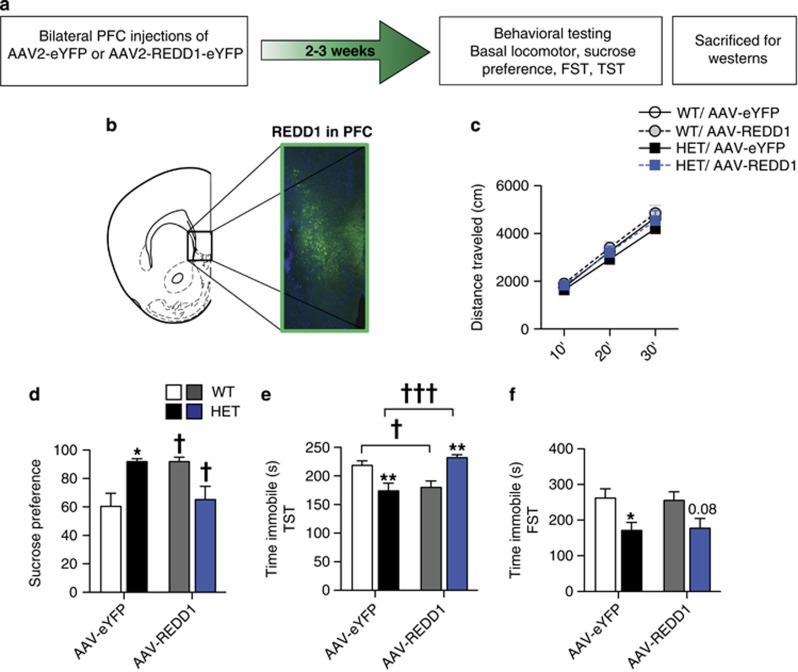Figure 4.
REDD1 over-expression in PFC of cacna1c heterozygous mice reverses the antidepressant-like effect. (a) Experimental outline used. (b) Representative image of green e-YFP-positive cells expressed by AAV-REDD1-eYFP stereotaxically delivered into the PFC of cacna1c HET mice. (c) AAV-REDD1 in the PFC does not alter total distance traveled in the basal locomotor activity test (WT: AAV-eYFP n=11, AAV-REDD1 n=9; HET: AAV-eYFP n=7, AAV-REDD1 n=8). (d) AAV-eYFP HET mice display significantly higher sucrose preference compared with AAV-eYFP WT mice. Sucrose preference of HET mice is significantly lowered by AAV-REDD1. In WT mice, AAV-REDD1 significantly increased sucrose preference compared with control AAV-eYFP mice (WT: AAV-eYFP n=14, AAV-REDD1 n=8; HET: AAV-eYFP n=10, AAV-REDD1 n=12). (e) AAV-eYFP HET mice display significantly lower immobility time in the tail suspension test compared with control AAV-eYFP WT mice. Immobility time of HET mice is significantly increased by AAV-REDD1 overexpression. In WT mice, AAV-REDD1 significantly decreased immobility time compared with control AAV-eYFP mice (WT: AAV-eYFP n=11, AAV-REDD1 n=9; HET: AAV-eYFP n=7, AAV-REDD1 n=8). (f) AAV-eYFP HET mice display significantly lower immobility time in the forced swim test compared with control AAV-eYFP WT mice that remained unchanged by AAV-REDD1 (WT: AAV-eYFP n=10, AAV-REDD1 n=9; HET: AAV-eYFP n=10, AAV-REDD1 n=13). *p<0.05, **p<0.01 vs WT for the respective viral treatment; †p<0.05, †††p<0.001 vs AAV-eYFP of the respective genotype. Error bars are mean±SEM.

